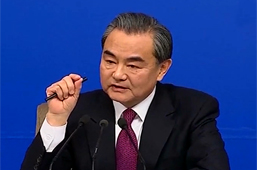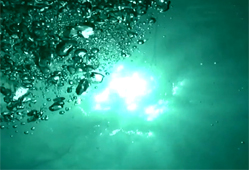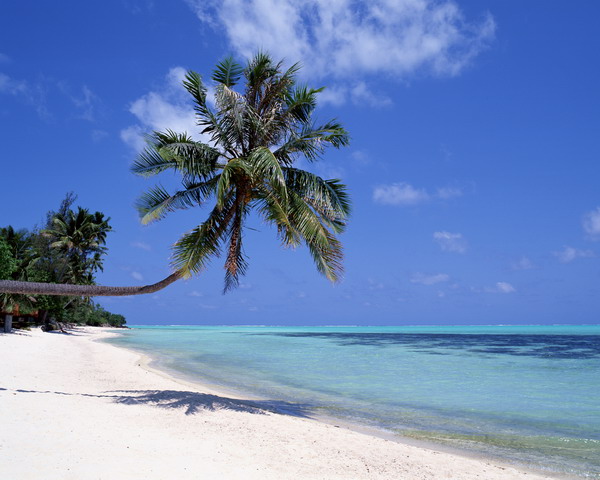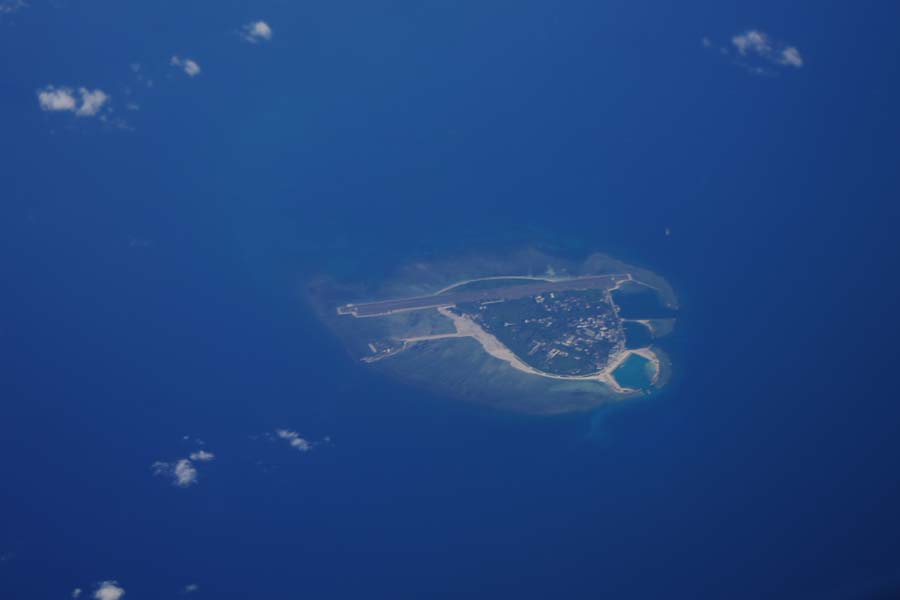(1) Oil and Gas Resources
Reserves of oil, natural gas and other hydrocarbon resources in the South China Sea waters are open to estimate. According to the US data released in 1998, the proven reserves amount to 7.5 billion barrels, or about 1.023 billion tons calculated on the basis of 7.33 barrels per ton. Areas with rich oil and gas reserves in the South China Sea include: (1) the area to the northwest of Nansha Trough (formerly known as the Palawan Trough), (2) Brunei-Sabah Basin; (3) Baram Delta, to the southwest of the Brunei-Sabah Basin; (4) Zhongkang Jiao and the Sarawak Coast; (5) Dongnatuna Basin; (6) Wan'an Bank; (7) Huanglong.
The geological oil reserves in the northern continental shelf of the South China Sea consist of 450 million tons in the Zhujiang River Mouth Basin, 150 million tons in the sedimentary basins in southeastern Hainan, Yingge Sea and Beibu Bay, as well as 3,000 trillion cubic meters of proven natural gas reserves in the west. There are eight major oil and gas depositional basins in Nansha Qundao and the adjacent waters, specifically including Zengmu Ansha (James Shoal) Basin, Brunei Sabah Basin, West Palawan Basin, Liyue Tan Basin (Reed Tablemount), Wan'anxi Basin, Andu Tan Basin, Zhenghe Basin and Zhongyue Basin, covering a total area of about 400,000 square kilometers.
(2) Other Mineral Resources
The sand banks, beaches, shore reefs and other sand bodies in the coastal areas of the coastal area of South China are rich in placer resources, of which ilmenite, tungsten, tin, gold, zircon, monazite, phosphorus Yttrium ore, rutile, niobium tantalite and glass quartz sand have reached the industrial grade or have been exploited. Several sand mineralization belts have been determined, including the diamond belt of East Guangdong, the tin belt of central Guangdong, the monazite-yttrium belt of western Guangdong, the ilmenite-zircon belt of Leizhou Peninsula-Eastern Hainan, and the glass quartz belt of Guinan.
The ancient river valley, sand banks, beaches and bottom gravel layer of the Quaternary Period in the continental shelf of the South China Sea are all prospective placer areas. The estimated amount of grit in the continental shelf for building fill is estimated at 450 billion tons. Hong Kong has since 1985 fetched about 250 million cubic meters of sand and gravel by dredging the marine silt layer of the Holocene continental shelf for various dredging and filling projects. In the islands of Nanhai Zhudao, there are some guano mines. In addition, sampling of deep-sea sediments has yield manganese nodules and cobalt-rich manganese crusts, making the lower section of the continental slope and deep-sea basins with water depths exceeding 4,000 meters prospective areas for their exploitation.
(3) Biological Resources
a. Animal Resources
There are about 750 species of fish in the northern part of the South China Sea. Among those, most are warm-water varieties, while warm-temperate species are fewer and cold-temperate species unfound. The fish fauna is subtropical in nature, belonging to the Sino-Japan Sub-zone of the Indian-Western Pacific Tropical Zone. All of the 1,000-odd species of fish in the south are warm-water species, mainly distributed in the tropical areas among the islands in the center of the South China Sea and extending north to the Xisha Qundao. Tropical in nature, the fauna belongs to the India-Malaya Sub-zone of the Indian-Western Pacific Tropical Zone. The main economic fish species include snake mullet, herring carp, red snapper, short-tailed big-eye sea bream, gold line fish, brown-striped mackerel scad and blunt snout breams.
There are numerous sea snakes of about 10 species in the South China Sea. Gathering in Beibu Bay from April to May and in the waters of Wanshan Islands every year from September to October, they are of fishing value. The South China Sea is the sea of frequent turtle activities. From April to December, turtles swarm to the islands of Nanhai Zhudao to lay their eggs, especially in the breeding season between April and July. Common species include turtles, hawksbills, red sea turtles and leatherback turtles. Sea animals include dolphins and whales. In the northern estuary area, white dolphins, dolphins and dugongs are common, while dolphins are often seen in groups in the central area.
There are a rich variety of planktons and most of those living in the upper layer of water are characteristic of tropical oceans. The shallow water in the northern coastal area is invaded by warm-temperate species in winter because of the northeast monsoon. However, they are active only briefly and are very much different from year to year. Planktons in the South China Sea are primarily tropical species, belonging to India-Malaya Sub-zone of the Indian-Western Pacific Tropical Zone in flora. The species of planktons in the deep water of the basins are scarce and their biomass is very low. Main plankton resources in the coastal waters include Japanese shrimps, red shrimps, serrated shrimps, jellyfish and yellow-spotted jellyfish.
The species of benthic fauna are quite abundant, but the numbers of dominant species are generally not large. Those in shallow water of the northern coast are basically tropical and subtropical shallow-sea species, of the subtropical nature and the Sino-Japan Sub-zone of the Indian-Western Pacific Tropical Zone. Benthic animals in the south, including the adjacent waters of Nansha Qundao are virtually all typical tropical species, and reef-building corals are particularly very well developed. The benthic fauna in the south is far greater than that in the north. Belonging to India-Malaya Sub-zone of the Indian-Western Pacific Tropical Zone, they are tropical in nature. The benthic fauna in areas deeper than 1,000 meters are characteristic of deep sea animals. The benthos resources of the South China Sea mainly include mother of pearl, oysters near the river, emerald mussels, sun and the moon shell, variegated abalones, and other mollusks, Banana prawns, long-haired prawns, Chinese lobsters, Common spiny lobsters, spotted sea crabs and serrated crabs, as well as Prickly Red Sea Cucumbers, serrated-rim sea cucumbers, black sea cucumbers and other echinoderms.
b. Botanical Resources
Tracts of mangrove species can be found along the coast of the South China Sea. Comprised of over 20 species, they are distributed sporadically often in the mudflat near the estuary. Forming a mangrove community with tropical characteristics, they are a shelter for coastal fish to breed to some extent. The benthic plants are divided into two categories, namely, those of the southern part and those of the northern part. In the northern part, along the coast of Guangdong, species representative of the sub-tropics are found, due to the influence of the continental climate. In flora they belong to Sino-Japan Sub-zone of the Indian-Western Pacific Tropical Zone. In the southern part, the waters of Nanhai Zhudao, tropical species are mainly found, belonging in flora to the India-Malaya Sub-zone of the Indian-Western Pacific Tropical Zone. The coast of the South China Sea is rich in benthic plant resources, and economic seaweeds mainly include Sargassum, lavers, Gracilaria, Caloglossa leprieurii, agar-agar and gloiopeltis.
c. Coral Reef Resources
Nanhai Zhudao are located in the tropics, with tropical marine and terrestrial ecosystems, roughly integrating the deep-sea middle and lower ecosystems, deep-sea upper ecosystem, the coral reef ecosystem and the coral island ecosystem in an organic manner.
Xisha Qundao has lush corals, divided into more than 160 species, featuring 124 reef-building corals and dominated by staghorn coral with large branches and rose corals with multiple branches. Except for Gaojianshi Rock (Pyramid Rock), which is a volcanic island, the rest of the islands are all coral reefs. Among them, Yongle Qundao are actually an atoll, consisting of multiple coral islands scattered around a large lagoon, which is connected to the South China Sea via a number of channels. Xuande Qundao are a half-moon open atoll with multiple channels.
As the second largest island of Xisha Qundao, Dongdao Dao covers an area of 1.55 square kilometers and consists of elevated reefs and coral shells. It is surrounded by a stepped reef terraces (with first step 3 to 5 meters under water, and the second and third ones 15 to 25 and 40 to 50 meters under water respectively). Distinct biological zones are observed for different steps and different directions. The northeastern reef platform is well developed, with a Porites belt, a blue coral belt and a coral algal belt distributed over the 500-meter-wide shallow water. The southwestern reef platform is only 150 meters wide, with poorly developed corals. In addition to corals, the coral reefs are extremely rich in tropical biodiversity, and recorded species include 400 kinds of seaweed, 500 species of fish and 1,800 invertebrates.
Nansha Qundao is mainly composed of coral reefs, with typical characteristics of tropical coral reefs (mainly atolls). The coral reefs recorded consist of nearly 100 species, dominated by Porites, honeycomb corals, antler corals and chrysanthemum corals.
(4) Tourist Resources
a. Sea Islands
Island tourism is an emerging tourism integrating sightseeing, leisure and vacationing. The world's leading island tourist resorts include the Maldives, Bali Island of Indonesia, Phuket Island of Thailand, Sabah Island of Malaysia and Jeju Island of the Republic of Korea. Likewise, Nanhai Zhudao of China also boasts enormous potentials for tourism development.
Nanhai Zhudao is an important carrier and historical testimony of China's marine civilization, and an important base for the study of the marine history and culture of China. Gradual development of the tourism resources there and the study of marine history and culture will be mutually reinforcing.
The rich variety of coral reefs, magnificent underwater reefs, various different corals, crystal clear water, garden-like gorgeous lagoons, soft white sand beaches and all kinds of valuable seafood are rare natural conditions for tourism development of Nanhai Zhudao. Here one can enjoy the rich perceptions brought about by the tropical sea, and try diving, and other unique tourism items. At the same time, relics of ancient Chinese fishermen are found on some of the islands. Those relics evidence is the fact that the Chinese people are the earliest to develop Nanhai Zhudao and constitute an important part of tourism culture.
b. Coasts
Along the coast of the South China Sea, there are three coastal tourism areas, including the island tourist belt along the coast of Guangdong, the tourist area of Hainan and the tourist circle of Beibu Bay.
The marine tourism of Guangdong are themed on holiday-making, with eight seaside tourist resorts, including Hailing Dao of Yangjiang, Donghai Dao of Zhanjiang, Dapeng Bay of Shenzhen, Dayawan Bay of Huizhou, Longhu Beach of Shantou, Honghaiwan Bay of Shanwei and Chuan Dao of Jiangmen.
With a pleasant island climate, a good ecological environment and unique tropical flavors, Hainan is particularly endowed with resources for building tropical coastal tourism resorts. In layout, the entire tourism area takes on a scale-development pattern with Sanya in the center and the southeastern coastal areas as the focus. Marine sightseeing consists of sightseeing by yacht, submarine and hydroplane, windsurfing, maritime fishing and aquaculture. Marine recreation includes motor-boating, windsurfing, sailing, surf riding, and water skiing, as well as fishing, diving, yachting, marine ecological science education, scientific expedition, exploration and so on.
The tourism circle of Beibu Bay covers Hainan Province, western Guangdong and southern Guangxi. First, a small tourism triangle including eastern Guangxi, western Guangdong and northern Hainan can be created and expected to become a hot spot of domestic tourism. Second, with the opening of cruise journeys from Beihai and Sanya to Vietnam, and the creation of direct land-based tourist lines from Dongxing Port of Xialong Bay in Guangxi, multiple highly popular tourist routes will emerge, and promote the joint development of tourism in Beibu Bay by China and Vietnam.
(5) Other Resources
Solar Energy: Nanhai Zhudao is richer in solar energy resources than any other maritime area of China and the vast majority of inland areas, and comparable to the Qinghai-Tibet Plateau. The average monthly solar radiation reaches 190 to 260 W/㎡ throughout the year.
Wind Energy: With effective wind speed at 3 to 20m/s, total hours at 5,500 to 8,000 hours or 65% to 89% of the time, and the effective density of 300 to 650 W/㎡, Nanhai Zhudao is among the regions endowed with rich wind energy resources in China. The maximal wind energy values at the south entrance of Taiwan Strait and that at Bashi Strait top all the waters of China.
Ocean Energy: The South China Sea boasts rich wave energy resources over its vast waters. The wave energy resources there are estimated at 38.3×1013W, twice the aggregate volume of the Bohai Sea, the Yellow Sea and the Donghai Sea. However, the temperature difference energy resources are more advantageous. The temperature of surface water in the South China Sea generally exceeds 26℃ for the whole year, and stays at about 5℃ at a depth of 1,000 meters. The stable, lasting and significant temperature difference is a favorable condition for thermoelectric generation. If tapped to the full, the power generated can reach 1~2×1012W. In addition, the tidal range is large, sometimes exceeding 2.5 meters, in the vicinity of the reefs, due to influences from the terrain, while the flow rate is generally fast. Therefore, efforts can be made to utilize the terrain and the tidal law for tidal and sea current power generation at the harbor entrances.
Spatial resources: Despite limited land area, the South China Sea boasts vast seas, with a huge potential for spatial development. Currently, marine space resources are generally used in the following manners: port waterway, island land development, underwater warehousing and so on. With the scientific and technological progress of human society, the marine space can be used for neo-type spaces for human survival and development, including maritime farming and maritime cities.



 Overview
Overview Resources & Environment
Resources & Environment



 QQ 好友
QQ 好友 微信好友
微信好友 易信好友
易信好友 QQ空间
QQ空间 朋友圈
朋友圈 百度空间
百度空间